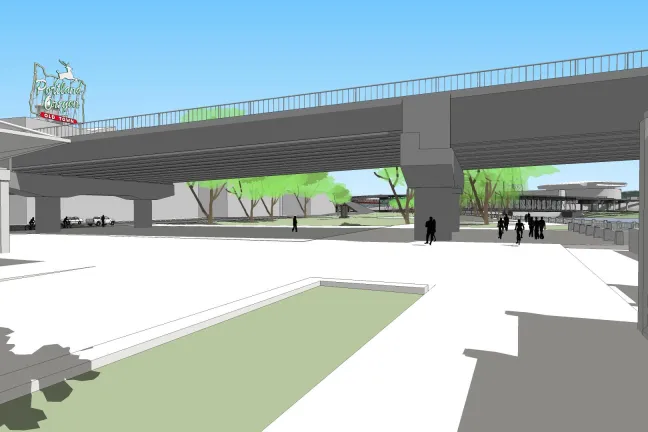Multnomah County’s Board of Commissioners approved an alternative contract method for the County’s Earthquake Ready Burnside Bridge construction project at their Jan. 20, 2022 meeting.
In Oregon, the standard public works contract method is a design/bid/build contract in which a contractor is selected after a project is designed, based on the lowest qualified bid. Instead, the Board approved a Construction Manager/General Contractor (CM/GC) contract method, in which the contractor is hired early in the design phase. Prior to the vote representatives from the County’s Purchasing and Transportation divisions explained the reasons for recommending the CM/GC method for the Burnside project.
Purchasing Manager Brian R. Smith explained that Oregon law requires jurisdictions to approve alternative contracting methods that deviate from the standard design/bid/build contract. Smith said that CM/GC is a method that the County has had success with for large and more complex projects. Recent examples include the contracts to construct the Central and East County Courthouses, the Sellwood Bridge and the Health Department headquarters.
“This project is very challenging and complex,” said Megan Neill, the project manager and Engineering Services Manager with the Transportation Division. “It has many constraints and risks. We feel this method is going to add value by getting that contractor input early during the design phase on means and methods, help us mitigate risks, identify innovative ways to bring the costs down, and decrease the schedule.”
An example of the cost savings that can come from a CM/GC contract is the idea that the Sellwood Bridge contractor came up with to move the existing bridge and use it as a detour bridge while the new bridge was built. The plan saved at least one year of construction and tens of millions of dollars.
The CM/GC method is also better suited to supporting County values, Neill said. “This will help us meet our workforce equity and subcontracting goals as well as achieve our sustainability certification through the Greenroads program. This is because we work early with the contractor during the design phase and work with them to set up the construction phase with our County goals in mind.”
In the traditional design/bid/build method, the construction contractor does not join the project until the project has been 100% designed. CM/GC provides more opportunity for the project owner, designer and builder to collaborate and innovate.
Neill explained that the County plans to issue requests for CM/GC proposals this summer and have a contractor under contract by this fall, when the Final Design phase begins. Replacing the Burnside Bridge with an earthquake-ready crossing will be the County’s largest capital project to date, estimated to cost in the range of $800-$900 million. Construction will begin in 2025, if funding is secured.
“The CM/GC process is a proven model,” said Commissioner Lori Stegmann, “in terms of reducing cost, making sure there is equity, and providing a more certain timeline.”
“This is a really important milestone for this project,” said Commissioner Jessica Vega Pederson. “This will allow us to be thoughtful and aggressive in meeting our contracting and workforce goals, while also being in alignment with ODOT and Federal Highway Administration requirements. We hope this project will have federal dollars, which adds some requirements for our project labor agreement and contracting.”
“I appreciate the reminder from Megan that the Cascadia Subduction Zone earthquake is not a matter of if but when,” said Commissioner Sharon Meieran. “We need to be prepared.”
The four county commissioners present voted unanimously to approve the exemption to use the CM/GC contract method. Chair Deborah Kafoury did not attend the meeting.

